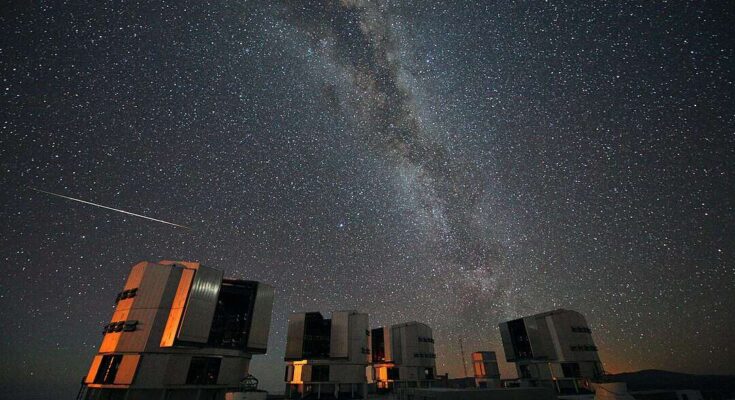Each August, a dazzling event happens in the night sky. It’s not a movie or a TV show but the Perseid meteor shower. This yearly event lights up the sky with bright, fast-moving streaks of light. The best time to watch is during the warm summer nights and early mornings.
The Perseid meteor shower is an annual occurrence when Earth passes through debris left by the comet 109P/Swift-Tuttle. This comet orbits the sun just like Earth but on a different path. As Earth travels through this trail of tiny particles, they hit our atmosphere at high speeds and light up. These particles, called meteoroids, become bright meteors for a brief moment before burning up.
This event occurs about 60 miles above us. Just imagine that the moon is about 24,000 miles away, and the star Mirfak, the brightest in the constellation Perseus, is 510 light-years away. The meteors are quite close in comparison and occasionally even close enough that they can be hearf, according to Mashable.
Visible during the pre-dawn hours of August 12th
The peak of the meteor shower will show up to 100 meteors per hour in the early morning of August 12th.
For the best experience, stay up late on Sunday, August 11th and watch into the early hours of Monday. Viewers can also look up anytime the sky is dark until the end of August. The viewing conditions depend on the brightness of the moon.
Photographing #Perseids – a thread: Now that we're in the week of the peak of the #Perseid meteor shower, you might be thinking about trying to photograph them. Here are some tips for dong so with a DSLR or similar camera… #PerseidsMeteorShower #Astrophotography pic.twitter.com/VPNvfl2Nu7
— Steve 'Sirius' Brown – amateur astronomer
(@sjb_astro) August 5, 2024
In 2024, only half of the moon will be illuminated at the peak. It will also set around midnight, making the early morning hours practically moonless. These are perfect conditions for watching meteors.
The exact timing of the moon varies by location, so viewers should check local listings for accurate timings. The Perseid meteor shower is one of the longer meteor displays, lasting for over a month each year. Viewers can see meteors from mid-July to late August.
Spotting the Perseids in 2024
The Perseids are named so because they seem to come from the constellation Perseus. However, viewers don’t need to find Perseus to enjoy the meteor shower. Meteors can be seen all across the sky during the event.
For the best viewing experience, go to a dark place far from city lights. Even lights in suburban areas can spoil the darkness, so aim for a remote spot if possible. Allow about 30 minutes for your eyes to adjust to darkness.
Telescopes and binoculars are fun but not necessary. They might even actually be an obstacle because they narrow our field of vision.






